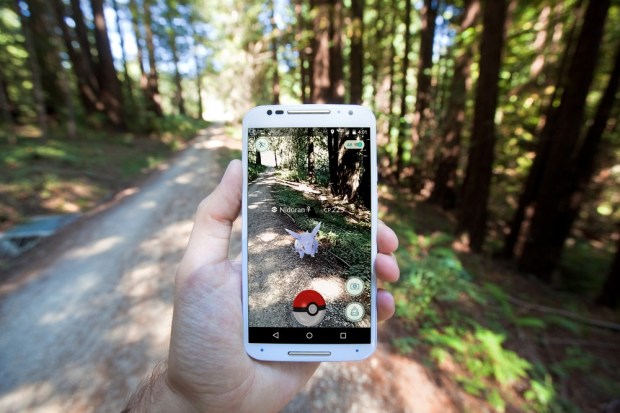Smartwatches Haven’t Caught Onto Pokémon GO Craze Yet

Pokémon GO is already one of the most successful apps in history, and everything from bars and restaurants to retailers have jumped in to offer promotions or deals to try and capitalize on the craze.
But is the smartwatch industry missing out on a major opportunity to also capitalize on this craze?
That’s what Ryan Fuoco, a category analyst at The NPD Group, believes after — ahem — “play testing” the game for a few weeks in the name of research (he swears it).
Pokémon GO is a fairly simply, straightforward mobile-based app game as far those types of games go. Developed by Niantic to capitalize on the strong cult following Pokémon products continue to have around the world, the game embraces augmented reality technology to allow users to “catch” a variety of different Pokémon characters by moving around a physical area, “train” them and then “fight” them against other players within the app. Users use a map of their local area to either “catch” the Pokémon directly within the game or through the augmented reality mode, which means the user has to use their camera to “catch” the Pokémon with the physical world as the background.
The game has been a resounding hit since its launch in early July, making a record $200 million in worldwide revenue in just one month’s time, according to information provided by Sensor Tower. Apple confirmed that Pokémon GO accumulated the most downloads in the first week of availability of anything ever on its App Store platform.
After being downloaded by millions and millions of users in its first few weeks, Nintendo’s value more than doubled, and soon, more people were playing the game than using Twitter. Pokémon GO became an (almost) worldwide phenomenon within weeks.
Sales of portable power packs designed to charge mobile devices, such as smartphones and tablets, skyrocketed 101 percent between July 10 and July 23 thanks almost entirely due to the popularity of the game (which chews up a lot of battery life on your smartphone or tablet because it uses location-based technology).
And any number of bars, restaurants and retail stores launched Pokémon GO specials in an effort to try and entice players of the game to walk through their doors.
There were even rumors that Niantic was developing plans to allow retailers to sign on as partners of the game, becoming physical “Poké Stops” or “gyms” to lure some of the most ardent players of the game.
But one opportunity that Fuoco believes Nintendo, Niantic and retailers are missing out on when it comes to the popularity of Pokémon GO is making the game compatible with smartwatches, since most of the game involves moving around physical locations tracking Pokémon and a large majority of smartwatch purchasers do so because of the health and distance tracking options the device offers.
Nintendo, one of the game’s investors, has already developed a small wearable for users of the game, called Pokémon GO Plus, which players can begin purchasing in September for about $35. The device vibrates or lights up when a wearer comes across a Pokémon or a Poké Stop, but there are currently no plans to make the device pairable with smartphones.
Which Fuoco believes is a big mistake.
“This new device misses out on some obvious functionality: The game encourages people to be physically active, and yet, the new wearable doesn’t even track users’ steps,” according to Fuoco. “Of course, adding such functionality comes with additional cost, and so, perhaps the very existence of the device should be questioned? Instead, this capability would be a great app innovation for smartwatches, linking Pokémon detection to the underlying fitness, and even mapping, capabilities of the device.”
Fuoco believes that the first smartwatch OS compatible with Pokémon GO Plus will mean big business for the smartwatch industry and the brand that implements it.
“Such an app would provide a clear use case for smartwatches, something that is missing for many consumers today, and would certainly help boost ownership levels,” Fuoco said. “While (presumably) the allure of chasing Pokémon … will fade over time, other smartwatch use cases will become apparent to this base, leading to lower device churn.”
